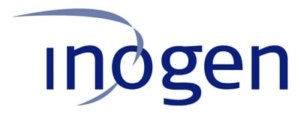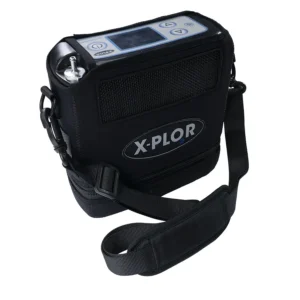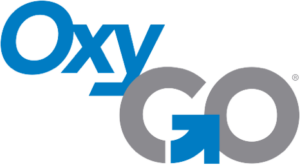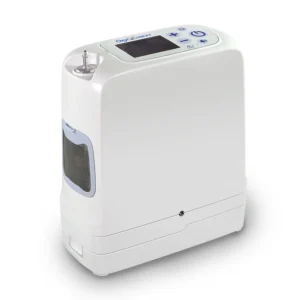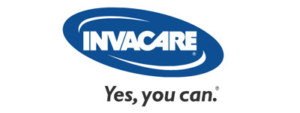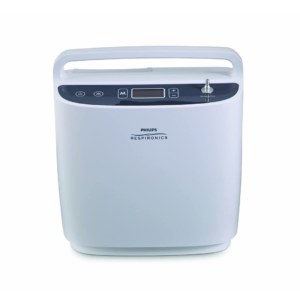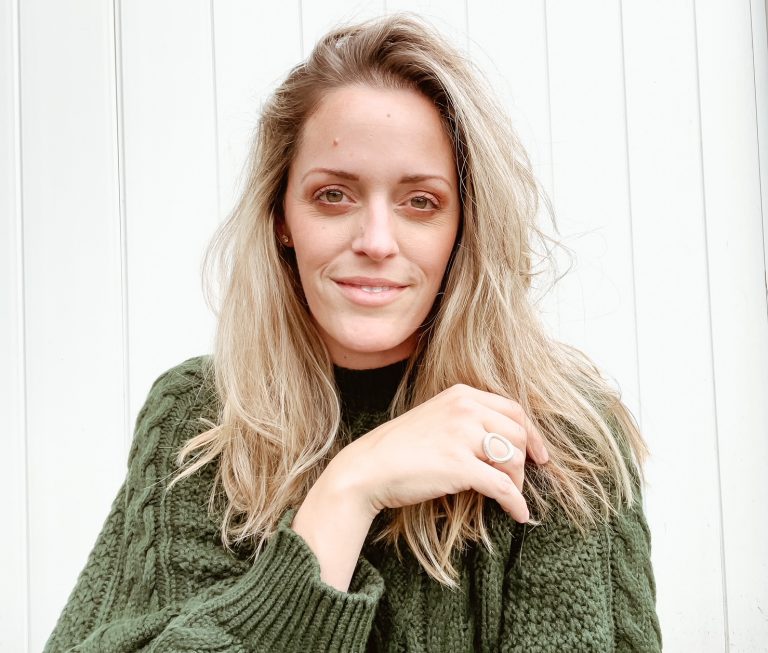Best Affordable Portable Oxygen Concentrators in 2023
AgingInPlace.org keeps our resources free by working as an affiliate partner with some companies mentioned on our site. These partnerships or the commission we may earn do not affect our opinions or evaluations of the products we mention. Our reviews are solely based on our research methodology and from input from our AgingInPlace.org Advisory Board. Learn more about our ad policies.
Best Affordable Portable Oxygen Concentrator...
Products carousel
Key Takeaways
- Portable oxygen concentrators are a great option for anyone in need of oxygen therapy and looking to maintain independence and mobility.
- As regulated medical devices, most portable oxygen concentrators are quite pricey.
- Dramatically less-expensive options found online are not capable of producing medical-grade oxygen and are not approved for medical use by the FDA.
If you’re facing the need for oxygen therapy, it might feel like you have to give up the activities you’ve always enjoyed. Images of large rolling tanks and excessive tubing can make any oxygen-dependent diagnosis feel like you’ve lost your freedom. However, thanks to modern technology, you don’t have to.
Compared to the oxygen options of the past, today’s portable oxygen concentrators (POC) are small, sleek, and more capable than ever before. Some claim to be usable 24/7, and recent studies confirm that they are effective enough to be your primary (if not only) source of supplemental oxygen. With many weighing under 5 pounds and batteries lasting for hours, long walks, social events, and even golf days are no longer off the table.
Here at AgingInPlace.org, we understand the benefits of maintaining freedom and mobility, and we believe deeply in maximizing your potential to enjoy all of life’s adventures. We’ve researched the POC models on the market today to offer you reviews of the best options at the most reasonable prices.
Portable Oxygen Concentrators We Reviewed:
- Most Reliable: Inogen One G3
- Best for Active Lifestyles: Belluscura X-PLOR
- Best Battery Life: Oxygo NEXT
- Most Affordable: Invacare Platinum Mobile
- Best Continuous Flow Unit: Respironics SimplyGo
Best Cheap Portable Oxygen Concentrators At-A-Glance
| Model | Flow Type | Maximum Oxygen Output | Unit Weight | Battery Life | Sound Level | FAA Approved | Warranty |
|---|---|---|---|---|---|---|---|
| Inogen One G3 System | Pulse | 1,050 ml/min | 4.9 pounds | 4.5 hours | 39 decibels | Yes | 3 years for concentrator; 1 year for battery and accessories |
| Belluscura X-PLOR | Pulse | 800 ml/min | 3.25 pounds | 2.5 hours | 39 decibels | Yes | 3 years for concentrator; 1 year for battery and accessories |
| Oxygo NEXT | Pulse | 1260 ml/min | 4.7 pounds | 6.5 hours | 38 decibels | Yes | 5 years for concentrator; 1 year for battery and accessories |
| Invacare Platinum Mobile | Pulse | 1000 ml/min | 4.8 pounds | 5 hours | 40 decibels | Yes | 3 years for concentrator; 1 year for sieve bed and battery; 90 days for accessories |
| Respironics SimplyGo | Pulse and Continuous | 2000 ml/min | 10 pounds | 3.4 hours | 43 decibels | Yes | 3 years for concentrator; 90 days for battery and accessories |
| Model | ||||||||||||||||||||||||||||||||||||||||||||||||||||||||||||||||||||||||||||||||
| Inogen One G3 System | Flow Type | Pulse | Maximum Oxygen Output | 1,050 ml/min | Unit Weight | 4.9 pounds | Battery Life | 4.5 hours | Sound Level | 39 decibels | FAA Approved | Yes | Warranty | 3 years for concentrator; 1 year for battery and accessories |
|---|
| Belluscura X-PLOR | Flow Type | Pulse | Maximum Oxygen Output | 800 ml/min | Unit Weight | 3.25 pounds | Battery Life | 2.5 hours | Sound Level | 39 decibels | FAA Approved | Yes | Warranty | 3 years for concentrator; 1 year for battery and accessories |
|---|
| Oxygo NEXT | Flow Type | Pulse | Maximum Oxygen Output | 1260 ml/min | Unit Weight | 4.7 pounds | Battery Life | 6.5 hours | Sound Level | 38 decibels | FAA Approved | Yes | Warranty | 5 years for concentrator; 1 year for battery and accessories |
|---|
| Invacare Platinum Mobile | Flow Type | Pulse | Maximum Oxygen Output | 1000 ml/min | Unit Weight | 4.8 pounds | Battery Life | 5 hours | Sound Level | 40 decibels | FAA Approved | Yes | Warranty | 3 years for concentrator; 1 year for sieve bed and battery; 90 days for accessories |
|---|
| Respironics SimplyGo | Flow Type | Pulse and Continuous | Maximum Oxygen Output | 2000 ml/min | Unit Weight | 10 pounds | Battery Life | 3.4 hours | Sound Level | 43 decibels | FAA Approved | Yes | Warranty | 3 years for concentrator; 90 days for battery and accessories |
|---|
Consider This When Buying a Portable Oxygen Concentrator
Flow type
Portable oxygen concentrators are available with pulse flow, continuous flow, or a combination of both. With pulse flow, oxygen release is usually triggered by inhalation. When the user inhales, a dose of oxygen is administered in a volume determined by your prescribed setting.
Continuous flow produces a steady stream of concentrated oxygen, regardless of whether you’re inhaling, exhaling, or between breaths. Models offering continuous flow typically provide a higher maximum oxygen output, making them preferable for people with prescribed higher flow rates.
Flow rate
The flow rate is what determines how much oxygen is being delivered to you, either per breath (with pulse flow) or per minute (with continuous flow). It’s important to find a model with a flow rate range that can accommodate your needs according to your prescription.
In pulse flow models, the flow rates available will be on a numbered scale, with most units offering between three and nine flow-rate settings. The models with more setting options allow for more precise dosing, which is beneficial for anyone with more sensitive or specific oxygen needs.
In continuous flow models, the flow rate is set in intervals of 0.5 liters per minute (LPM), with the flow setting between 1 liter per minute to 4 liters per minute or more.
Your ideal flow rate will be determined by your oxygen prescription, but many people benefit from a wider range of flow rates if they often need more during exertion or less during rest.
Size and weight
Although all POCs are by definition designed to be portable, they’re not created equal. Some are heavier or lighter than others, and the dimensions will vary in terms of height, width, and length. How much the size and weight of a unit affects portability will depend on your individual condition.
For example, some people may find anything over 5 pounds cumbersome, while others can easily lift 10 pounds or more. While these models are designed to be lightweight and portable, factors like continuous flow capability, higher oxygen output, and longer battery life often mean more weight and larger dimensions.
Battery life
Like size and weight, how long a battery lasts on a full charge will directly affect how much mobility you’ll gain from your POC. Shorter battery life means you have less time to spend away from either a charger or other oxygen unit, whereas longer battery life means more time can be spent “unplugged.”
It’s important to consider your individual needs, as not all people need maximum battery life. For example, if you typically only require oxygen therapy during activity or exertion, models with shorter battery life will have no problem accommodating your needs if your physical activity lasts less than a few hours.
If a model seems ideal on all factors except battery life, purchasing a second battery or a double-size battery is an option that many people choose. Having a spare battery offers extended battery life as well as peace of mind that you won’t be stuck away from home with a dead battery.
FAA approval
Approval from the Federal Aviation Administration is essential if you ever plan to use your POC during air travel. The FAA has strict guidelines for portable oxygen concentrators to be allowed onboard, but luckily most modern devices are FAA-compliant and usually labeled as such directly on the body of the POC.
Filter
Portable oxygen concentrators filter the incoming air before it reaches the other components. Each model requires a specific filter as detailed by the manufacturer.
Although most filters are designed for easy removal during cleaning or replacement, it’s important to recognize that filter maintenance is essential to keep your POC working properly and delivering filtered oxygen. Luckily, besides battery charging and tubing and cannula replacement, simply replacing or cleaning your POC filter is the only regular maintenance you should have to perform on your machine.
Sound level
The sound produced by your POC, measured in decibels, will vary greatly between models. A continuous flow unit runs steadily during operation, so it requires a larger motor to produce higher-volume oxygen and is noticeably louder than pulse flow.
While noise level doesn’t impact the effectiveness of a unit, some older adults find the steady hum of an oxygen concentrator to be embarrassing or distracting in certain settings. Even so, most models are designed to keep the sound level below that of a quiet conversation for the sake of subtlety and portability.
If you plan to use your POC in quiet places such as a shared office environment, you may want to look for a model with a lower average sound level.
Accessories
Some models come standard with a variety of accessories, while others may require additional purchases. Items like a carry bag, rolling cart (for heavier/larger models), cannula and tubing, and charging cable are typically included with the initial purchase of your portable oxygen concentrator.
Accessories available for purchase separately include spare batteries or larger/double size batteries, carrying backpacks, external battery packs, and replacement cannulas.
Warranty
The manufacturer’s warranty on your device is an important consideration in terms of protecting your investment. Most portable oxygen concentrators offer warranties between three and five years, though they typically break down the warranty into three parts—the portable oxygen concentrator, the battery, and the accessories.
It’s helpful to be clear about what exactly is covered by the warranty on your POC to avoid any issues or difficulties if you need to make a warranty claim.
Cheap Portable Oxygen Concentrators
Before we dive into our picks for the best cheap portable oxygen concentrators, let’s define what is considered “cheap.” While the most expensive options can cost $4,000 or more, the more affordable models are still a significant investment—$2,000 or more.
When searching for cheap portable oxygen concentrators, you might come across even cheaper options, some even less than $500. However, those machines may not be producing medical-grade oxygen. A concentrator producing medical-grade oxygen will deliver oxygen with an average oxygen concentration of 95% or more.
Non-medical devices are often sold as “oxygen concentrators” if they deliver anything above the average atmospheric air concentration of oxygen, which is 21% and does not accommodate increased medical oxygen needs.
With that understanding, let’s take a look at our favorite cheap portable oxygen concentrators.
Top Features
- Inogen is one of the most well-known names in personal oxygen therapy.
- This is the most affordable model in the Inogen One portable oxygen concentrator family.
- Intelligent Delivery Technology responds to your breathing rate for precise dosing.
Pros
-
Only 4.9 pounds with a standard single battery
-
Quiet operation at 39 decibels
-
Protected tubing connection
Cons
-
Larger than some other POCs
-
Small display
Model Details
- Flow type: Pulse
- Maximum output: 1,050 milliliters per minute
- Weight: 4.9 pounds
- Dimensions: 7.19 by 3.26 by 8.15 inches
- Battery life: 4.5 hours
- Sound level: 39 decibels
- Items and accessories included: POC unit, battery, carry case, AC power adapter, DC power cord, cannula
- MSRP Price: $2,665
Inogen has long been a leader in portable oxygen therapy, offering top-quality devices with always-competitive specs. The Inogen One G3 is no exception. It’s lightweight, quiet, and offers oxygen output comparable to most other models.
Users enjoy peace of mind from the big-name brand and excellent customer service, along with the benefit of cutting-edge technology. Inogen’s Intelligent Delivery Technology adapts its oxygen delivery to your breathing rate, ensuring that the oxygen rate per minute stays consistent no matter how slow or how fast you’re breathing.
Inogen has long been a leader in portable oxygen therapy, offering top-quality devices with always-competitive specs. The Inogen One G3 is no exception. It’s lightweight, quiet, and offers oxygen output comparable to most other models.
Top Features
- It’s one of the most compact portable oxygen concentrators available today.
- Curved ergonomic design sits close to your body to reduce movement during activity.
- The simple design looks modern and stylish, so it doesn’t stand out as a medical device.
Pros
-
Ultra-lightweight at just 3.25 pounds with battery
-
Quiet operation at 39 decibels
-
Large display and buttons
Cons
-
Shorter-than-average battery life of 2.5 hours on setting 2
-
Lower maximum output of 800 milliliters per minute
Model Details
- Flow type: Pulse
- Maximum output: 800 milliliters per minute
- Weight: 3.25 pounds
- Dimensions: 7.3 by 2.9 by 7 inches
- Battery life: 2.5 hours
- Sound level: 39 decibels
- Items and accessories included: POC unit, battery, AC power adapter and DC power supply, carry bag, cannula
- MSRP Price: $2,595
As the smallest unit on our list, the Belluscura is the ideal pick for anyone who needs oxygen therapy and wants to stay as active as possible. It can easily be transported and carried close to the body in its carrying case or backpack, and the device’s 2.5 hours of battery life allows for a long walk, bike ride, or other activity while remaining incredibly small and discreet.
This model may not be able to meet more complicated or advanced oxygen needs due to its lower maximum oxygen output, but it does a superior job of offering freedom and mobility for individuals with mild to moderate needs. Consider this one if you don’t want to let your oxygen therapy hold you back from any adventures that life has to offer.
Top Features
- Oxygo NEXT is competitive on every specification, without making significant sacrifices.
- It’s one of the very few portable oxygen concentrators available that offers a five-year warranty.
- The “My Oxygo” app allows users to monitor and control their device through their smartphone or tablet.
Pros
-
Designed for 24/7 use
-
Impressive maximum battery life of 6.5 hours
-
High maximum oxygen output of 1,260 milliliters per minute
-
Large, clear LCD display and controls
Cons
-
App may be confusing for some users
-
Medical-looking design
Model Details
- Flow type: Pulse
- Maximum output: 1,260 milliliters per minute
- Weight: 4.7 pounds
- Dimensions: 3.26 by 7.19 by 8.15 inches
- Battery life: 6.5 hours
- Sound level: 38 decibels
- Items and accessories included: POC unit, carry bag, battery, AC power supply, DC power cord, cannula
- MSRP Price: $2,600
If you’re looking for unparalleled battery life without compromising size, weight, or other functions, the OxyGo NEXT may be the perfect pick. OxyGo may not be as recognizable as brands like Inogen or Respironics, but this machine more than keeps up with its big-name competitors. With a maximum battery life of five hours on a single charge with a standard battery, set at 2 liters per minute, the NEXT offers you the freedom to do just about anything with your day.
While other models often end up larger or heavier to accommodate a more capable battery and more powerful motor, the OxyGo NEXT has managed to stay under 5 pounds. The maximum oxygen output of 1,260 milliliters per minute is higher than many other portable pulse-flow units, making it an excellent pick for anyone with low to moderate oxygen needs looking for a great all-around machine.
Top Features
- This model is built to be rugged and durable, making it less likely to require repairs or replacement.
- Its modern design and stylish user interface eliminates the clinical appearance that’s common among POCs.
- The Platinum Mobile offers everything you need and nothing you don’t—at a lower price than most competitors.
Pros
-
Above-average maximum battery life of five hours
-
Battery fully recharges in just over two hours
-
Water and bacteria resistant
Cons
-
Accessory warranty is below average at just 90 days
-
Rounded design prone to bouncing and moving
Model Details
Flow type: Pulse
Maximum output: 1,000 milliliters per minute
Weight: 4.8 pounds
Dimensions: 7.5 by 3.88 by 9.45
Battery life: Five hours
Sound level: 40 decibels
Items and accessories included: POC unit, battery, carry case, AC power adapter, DC power cord, cannula
MSRP Price: $2,495
When it comes to affordability, every dollar counts. Most options on our list are priced similarly but the Invacare Platinum is consistently a couple hundred dollars cheaper than competitors, depending on the retailer. If you’re shopping with a budget in mind, you’re likely looking for something that will give you the most bang for your buck, and this model delivers.
What really stands out about the Invacare Platinum Mobile (besides the price) is its rugged durability—it’s built to last. Its modular design eliminates joints, seams, and other possible openings, and it’s both water and bacteria-resistant. The manufacturer states that this model can even be rained on for up to 10 minutes without the threat of damage to the concentrator or any of its components, though it should never be submerged in water. If you want durability with all the functionality of more expensive models, this is the one for you.
Editor’s Choice & Best Continuous Flow Unit

Respironics SimplyGo
Top Features
- This unit offers the flexibility of both continuous flow and pulse flow for those with more advanced oxygen needs.
- The SimplyGo is significantly lighter than other continuous flow units, offering maximum oxygen output with greater mobility
Pros
-
One of the lightest continuous flow models available at just 10 pounds
-
Battery fully recharges in only 2.5 hours
-
Above-average maximum output of 2,000 milliliters per minute
Cons
-
Louder than many other models at 43 decibels during operation
-
More expensive than many pulse-flow-only models
Model Details
- Flow type: Pulse and continuous
- Maximum output: 2,000 milliliters per minute (2 liters per minute)
- Weight: 10 pounds
- Dimensions: 11.5 by 6 by 10 inches
- Battery life: 3.4 hours
- Sound level: 43 decibels
- Items and accessories included: POC unit, battery, carry cart, accessory bag, AC power supply, DC power cord, cannula
- MSRP Price: $3,295
In the world of portable oxygen concentrators, it’s tough to find lightweight, continuous flow at a reasonable price. The Respironics SimplyGo checks those boxes and then some. At a mere 10 pounds, this model is the lightest one offering continuous flow that we’ve found. With a maximum output of 2,000 milliliters per minute (or 2 liters per minute) it’s capable of meeting most oxygen needs while remaining effortlessly portable.
Like most continuous flow concentrators, it’s louder than pulse flow options, but not by much. It’s also small enough to be unobtrusive while allowing continuous flow users to go just about anywhere, even on an airplane. The Respironics SimplyGo is the best option for a continuous flow machine that offers maximum mobility and independence.
How Oxygen Concentrators Work
Oxygen concentrators work by drawing in the air around you and purifying it to produce concentrated oxygen. The motor draws surrounding air in through a filter, then it passes through a sieve bed where nitrogen is removed. The concentrated oxygen is then compressed and temporarily stored in the machine before being released at a rate according to your settings.
Concentrated oxygen is delivered to you either through your nose with a cannula, or less commonly through your mouth and nose with a mask. The cannula or mask and tubing simply attaches to the outlet port on the machine.
Once power is turned on, most portable oxygen concentrators have a short “power up” period of a few seconds to a couple minutes. From there, you set your flow rate, attach your mask or cannula, and you’re ready to be mobile and active while receiving your prescribed oxygen therapy.
Who Uses Portable Oxygen Concentrators?
A portable oxygen concentrator is an excellent solution for anyone on oxygen therapy who wants more freedom and mobility than they can get from a stationary concentrator or another oxygen method. Oxygen needs range widely, and many oxygen users are capable of normal activity levels if their oxygen needs are being met.
The most common conditions that require supplemental oxygen use include:
- Chronic Obstructive Pulmonary Disorder (COPD)
- Asthma
- Pneumonia
- Pulmonary Fibrosis
- Sleep Apnea
- Cystic Fibrosis
- Lung Cancer
“An increasing number of people suffer from various heart, lung, and other respiratory diseases and require supplemental oxygen therapy at home, when traveling, or while participating in daily activities away from home.”
Snehal Kamble, Marketing Strategist, Straits Research
Although stationary oxygen concentrators are still a widely-used option, “[portable] oxygen concentrators work on a plug-in battery, making them more convenient to use, lightweight, and compact, thus providing easy mobility. These factors contribute to the upsurge in demand for portable oxygen concentrators.”
Do I Need a Prescription to Buy a Portable Oxygen Concentrator?
Yes, you need a prescription to complete the purchase of a medical-grade portable oxygen concentrator in the United States. This restriction is enforced by the Food and Drug Administration, which states: “The FDA has not approved or cleared any oxygen concentrators to be sold or used without a prescription” to avoid misuse and dangerous side-effects like oxygen toxicity.
Though your prescription may be the most important factor in choosing your portable oxygen concentrator, a study from Respiratory Care Journal reiterates that patient choice matters, stating that “the healthcare provider should provide information and help to direct the subject toward the most clinically appropriate oxygen system, while being mindful of the patient’s preferences and lifestyle.”
Other Portable Oxygen Concentrators We Recommend
If you didn’t find exactly what you’re looking for here, there are plenty of other options on the market. Here are some additional models that we highly recommend:
CAIRE Freestyle Comfort
With exceptional battery life and modern features like MyCaire Telehealth, this model is a great all-around pick for value, function, and portability.
Inogen One G5 System
Inogen’s most advanced portable oxygen concentrator system yet, offering 24/7 capability, smart features, and up to 6.5 hours of battery life.
ResMed Mobi
On top of competitive specifications like weight and battery life, this model comes with an unbeatable five-year warranty, which includes one year of warranty coverage on batteries and accessories.
Check out our Best Portable Oxygen Concentrators in 2023 for more details and reviews of our favorite models.
Bottom Line
Legitimate medical-grade portable oxygen concentrators are pricey. But there are plenty of options that are more budget-friendly than others. Taking the time to consider your oxygen needs and lifestyle will help you to select the best option for you, so that you can have freedom, mobility, and independence—at the best available price.
Why Trust Us?
The AgingInPlace.org team researches, analyzes, and tests health products to help older adults make better decisions as they age. For portable oxygen concentrators, we’ve reviewed 11 manufacturers and 22 individual models on the market today to offer you our top picks for the best affordable oxygen concentrators in 2023.
We’re committed to bringing you the most accurate information, based on our in-depth research. Below you’ll find a description of our methodology for reviewing portable oxygen concentrators:
- Spent hundreds of hours researching POC brands and models
- Consulted medical experts and journals
- Studied the user experience through insight from professionals, user reviews, and third-party research
To provide the most fair and objective reviews and comparisons, we use a mathematical formula to score each model based on the following considerations:
- Unit weight
- Battery life
- Range of settings
- Price
- Battery recharge time
- Warranty
- Oxygen delivery method
Our team monitors and regularly updates information to ensure relevance and reliability throughout all of our content. Many products and services featured on AgingInPlace.org will play a crucial role in your daily life. As these products should help enhance aging at home, we work to uncover as much as possible about the products and services we review. We also consult occupational therapists, audiologists, geriatricians, respiratory therapists, professional adult caregivers, and other experts in the field to ensure we’re providing the most accurate, helpful information.
Frequently Asked Questions
-
Portable oxygen concentrators are a significant expense, with even the most budget-friendly options costing upwards of $2,000.
-
Yes! Portable oxygen concentrators require no tanks or refills, offering little room for error. Some are designed for 24/7 use, and their sale and distribution is regulated by the FDA making them reliable, medical-grade options for oxygen therapy.
-
Tanks require monitoring and refilling, meaning there’s always a risk of them running low or empty and leaving you with no oxygen. Since oxygen concentrators use only the surrounding air, they can be used anytime, anywhere, and are arguably the better option for personal oxygen therapy.
-
Yes, using your concentrator on a setting higher than what you need can result in oxygen toxicity. Be sure to always use your concentrator at the flow setting prescribed by your doctor.
-
Portable oxygen concentrators do not create oxygen. Instead, they draw in surrounding air and filter out the nitrogen, leaving behind nearly pure oxygen.
WRITTEN BY
With over six years of clinical experience in long term care and rehabilitation, Ayla is passionate about helping people age safely and with dignity. She is an LPN (Licensed Practical Nurse), licensed with the State Board of Nursing in Massachusetts, and holds a B.A. in Psychology. Through her education and work she has focused on combining practical health knowledge with the individual needs and desires of older adults to bring the absolute best care and content to patients and readers.
View AuthorMEDICALLY REVIEWED BY
Elizabeth has been a respiratory therapist since 1983 and remains licensed in the state of New York. Her experience in respiratory care includes routine and critical care in the hospital setting outpatient and at home equipment modalities and management and use of home ventilators, CPAP, BiPAP, apnea monitor, nebulizer, and other respiratory-related equipment.
View Reviewer- What is Medical Oxygen? | Air Source Industries
- Pulse Oximeters and Oxygen Concentrators: What to Know About At-Home Oxygen Therapy | FDA
- Acceptance Criteria for Portable Oxygen Concentrators | FAA Contemporary portable oxygen concentrators and diverse breathing behaviors—a bench comparison | NIH
- A Comparative Study of 3 Portable Oxygen Concentrators During a 6-Minute Walk Test in Patients With Chronic Lung Disease | Respiratory Care Journal
Do you want to cite this page? Use our ready-made cite template.
